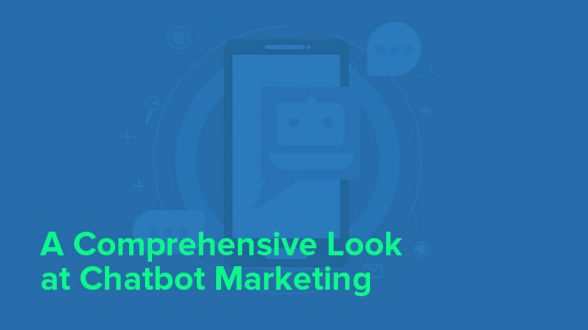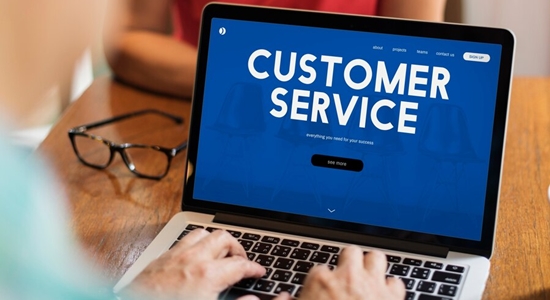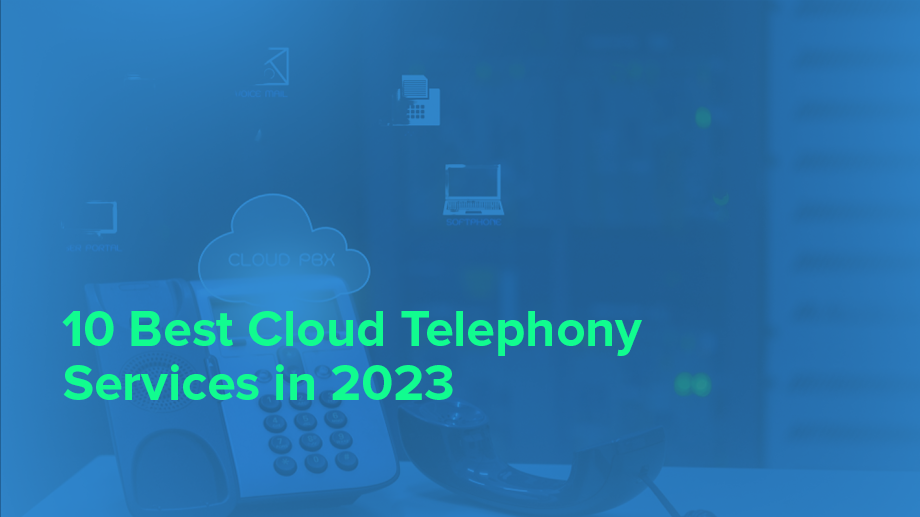- Resources
- A Comprehensive Look at Chatbot Marketing
A Comprehensive Look at Chatbot Marketing

“Hi! How can I help you?”
Looks familiar? Perhaps, every internet user has interacted with a chatbot at least once in their lives. The use of chatbots on websites and social media has become ubiquitous, and for good reason. They respond quickly to customers, generate leads, and save many resources. A survey by Draft.com revealed that 55% of businesses that use chatbots generate more high-quality leads while another finding by Gartner said businesses have witnessed increased operational efficiency of 25% after adding AI into their omnichannel platform.
So, if you are struggling to generate leads and want to improve customer communication, you need to adopt chatbot marketing. In this article, we will dive into the use cases of chatbots in marketing.
Let’s begin!
In this article, we will explore:
- 1. What are Chatbots?
- 2. Types of Chatbots
- 3. Benefits of Chatbots in Marketing
- 4. Challenges to Chatbot Marketing and How to Overcome Them
- 5. Strategies to Boost Your Chatbot Marketing Strategy
- 6. Mistakes to Avoid in Chatbot Marketing
- 7. Are chatbots the future of marketing?
- 8. Can Ozonetel help me build a chatbot?
What are Chatbots?
Chatbots are software tools designed to simulate human conversation. With rapid advancement in AI & other new-age technologies, chatbots have evolved to be smarter, more responsive, and more useful. Chatbots’ utility is no longer restricted to customer service and support; they have also become widely popular as a marketing tool.
The most common chatbots are based on artificial intelligence (AI) and natural language processing (NLP) technologies, which allow them to understand and respond to human queries without any time constraint.
Given consumers’ demand for 24-hour service, businesses are increasingly employing chatbots to cater to their audience. No wonder chatbots have taken off in a big way. The global chatbot market size, which was USD 396.2 million in 2019, is expected to grow to a whopping USD 1953.3 million in 2027 at a CAGR of 22.5%.
Types of Chatbots
Chatbots mainly fall under the following two categories:
Rule-based chatbots
Are you looking for a chatbot that can help you with simple tasks or queries? If so, a rule-based chatbot may be the right choice for you. Rule-based chatbots are designed to perform specific tasks or provide information based on pre-determined rules. These rules are fed into chatbots during their design phase. This makes them ideal for simple tasks or queries that do not require complex decision-making.
However, that also means you would need to manually update new rules and responses based on the data collected by the chatbot. This is because rule-based chatbots can’t learn from user conversations. In other words, they aren’t as evolved as AI chatbots are.
But they are easy and cheaper to implement for any business. This is why rule-based chatbots are perfect for companies that only need to provide basic answers based on “if/then” statements.
This brings us to the second type of chatbot.
AI-based chatbots
Unlike rule-based chatbots, AI chatbots are powered by NLP, machine learning (ML), and sentiment analysis. These technologies allow AI chatbots to converse in a humanistic, natural way. By using machine learning, for instance, chatbots can become more accurate in understanding human input and responding accordingly.
NLP enables chatbots to understand the context behind user queries and replicate human speech patterns. In addition, AI chatbots can “feel” users’ emotions, thanks to the sentiment analysis technology they are equipped with.
That doesn’t mean AI chatbots don’t need to be programmed. Like rule-based chatbots, they, too, need to be fed basic responses upfront. However, they can learn from user interactions and use those experiences to generate better, more accurate responses in the future.
You won’t need to manually update an AI chatbot with additional responses now and then. However, since AI chatbots are more advanced than their rule-based counterparts, they are more expensive to implement.
Benefits of Chatbots in Marketing
You’re missing out on a huge opportunity if you’re not using chatbots in your marketing strategy. Chatbots for marketing can help you automate your tasks, saving you time and money. In addition, chatbots for marketing can help you personalize your messages and connect with your customers more humanly. Here are just a few of the many benefits of chatbots in marketing:
Lead Generation
Are you looking for a new and innovative way to generate leads?
Chatbots can engage with potential customers and collect information, such as contact information and product preferences.
Improved User Engagement
We all know how frustrating it can be to deal with customer service issues. First, you wait on hold for what feels like forever, only to be transferred to another department and put on hold again. It’s enough to make you want to pull your hair out!
Thankfully, chatbots are here to help. By providing quick and easy access to customer service on various social media platforms and websites, chatbots help improve user engagement and satisfaction.
They provide a quicker, more personal, and interactive experience. Chatbots also build rapport with customers and resolve issues efficiently. In addition, they can also engage proactively with customers and provide them with useful information, such as product updates and special offers.
Saved Resources
We all know that time is money. So, it only makes sense that chatbots can help save you both!
By automating simple tasks and providing quick answers to common questions, chatbots can free up your time so you can focus on more important things.
Not to mention, chatbots also help you save money. Automating marketing activities such as lead generation can save the cost of hiring more people and avoid costly human error.
Enhanced Data Analysis
Businesses need to make data-driven decisions to stay competitive. But with so much data, it can be tough to know where to start. That’s where chatbots come in. Chatbots can help you sift through all that data and find the customer insights needed to make better business decisions.
You can further optimize your digital marketing strategy by understanding your customers’ needs and preferences. This will, in turn, help you achieve better financial results for your business.
Traffic Segmentation
Websites are no longer a one-size-fits-all platform. Businesses need to segment their traffic to engage better and convert website visitors. Chatbots can play a crucial role in this process by helping identify the needs of each website visitor and directing them to the most relevant content.
This way, chatbots for marketing can help improve the user experience while increasing conversions and sales. Chatbots for marketing also allow marketers to target different groups of visitors with different content, offers, or ads.
Better Lead Nurturing
If you’re like most businesses, you’re always looking for ways to nurture your leads and turn them into customers. Chatbots can be a great way to do this. You can build trust and relationships that will eventually lead to sales by engaging with your leads in a personal, one-on-one conversation.
In other words, chatbots can help you automate your lead nurturing process and keep your leads engaged until they’re ready to buy.
Streamlined Order Processing
If you’re an e-commerce business, you know that processing orders can be a time-consuming and tedious task. But what if there was a way to streamline this process using chatbots? Chatbots are a growing trend in e-commerce and for a good reason.
They can automate many tasks associated with order processing, from taking customer information to providing shipping updates. This frees your staff to focus on other important tasks like working on customer pain points and thus improving customer satisfaction.
Benefits of using chatbots for lead generation include:
- They are available 24/7. Chatbots can engage with potential customers at any time. This means they can answer questions and provide information even when your staff are unavailable.
- Many chatbots can even integrate with other platforms, such as email or text messaging, to streamline collecting and responding to customer questions or requests.
- They can qualify leads, schedule appointments, and even close deals for you.
Here are some chatbot marketing examples:
- Sephora saw an 11% increase in booking through the use of their reservation assistant. Booking through the bot involved five fewer steps, allowing clients to book appointments faster.
- Asuntoyhtymä is a Finnish housing investment company that generated 300 new leads after implementing a property portal bot.
- Robert Pires, the official chatbot of Arsenal Football Club, engages with the audience and keeps soccer fans up to date with the latest events, the ultimate aim being to keep supporters hooked on to the site.
Challenges to Chatbots Marketing and How to Overcome Them
No doubt, marketing automation has simplified the task of marketers, but still several misconceptions exist regarding it. The primary misconception is that you can set up a chatbot and forget about it. While you can definitely do that, doing so will not be in your best interest. A successful marketing campaign that has been achieved after much planning cannot be left on its own. Monitoring and deriving actionable insights from the data generated is the best way forward.
Moreover, when businesses employ a chatbot to handle all customer queries, they assume it can solve everything. That’s not the case. Chatbots may not be able to answer queries in certain situations. In such a scenario, chatbots should know when to take the help of a human. A seamless transition from the bot to the human is what will make the customer experience smooth.
Strategies to Boost Your Chatbots Marketing Strategy
You’ll need to keep a few things in mind when developing a chatbot marketing strategy, but if you do it right, you can reap some phenomenal benefits.
Listed below are some of the chatbot marketing strategies you will find helpful:
Study Your Target Audience
Both rule-based and AI chatbots need programming to answer the most frequently asked questions (FAQs) or customer concerns. Therefore, you must have deep knowledge of your customers’ common queries and issues.
This is important to increase the effectiveness of your chatbot. You can do so by email surveys, directly talking to customers, and leveraging the data you already have.
Define Your Goals
Before deploying chatbots for marketing, you need to identify their use cases by identifying your goals. This way, you’ll make the best use of your available resources and only use chatbots where they benefit you the most.
For instance, if your sales team is having difficulty responding to multiple customer queries, you might consider deploying chatbots on your firm’s social media platforms.
Similarly, if you feel you are losing valuable traffic due to a lack of segmentation, consider deploying a chatbot on your website too. The use cases will also determine the capabilities your chatbot will be equipped with.
For instance, not every chatbot can schedule meetings or complete orders. Depending on your needs, you will need to select an appropriate candidate.
Give Your Chatbot a Personality
Your chatbot may be the smartest one on the block, but without a voice and personality, it’s just a machine. So how do you give your chatbot a voice and personality that will make it stand out from the rest?
Map Your Customer Journey
Are you considering deploying chatbots to help improve your customer experience across platforms? If so, it’s crucial to map your customer’s journey first. Understanding how your customers interact with your business can ensure that your chatbots provide the proper support at the right time.
Build conversation trees
If you’re looking to build chatbots that can carry on a conversation, you’ll need to start with a conversation tree. This will help you map out all the possible ways the conversation could go and what the chatbot’s response should be in each case.
Conversation trees are a great way to add depth to your chatbot’s conversation, and they can help you create a more natural and human-like conversation flow.
Test your chatbot
You’ve created the perfect chatbot for your business. It’s engaging, entertaining, and informative. And it’s finally time to deploy it. But before you do, you need to test your chatbot.
Remember a few things when testing your chatbot for marketing.
Make sure all the functionality is working correctly.
Test it with real users to see how they interact.
Ensure your chatbot can handle unexpected input when needed.
Doing so can avoid any embarrassing or frustrating issues down the line.
Define Your Goals
What do you intend to use chatbots for?
- Is it lead generation?
- Is it website traffic segmentation?
- Is it hassle-free order processing?
Give Your Chatbot a Personality
Here are some tips:
- Make sure your chatbot’s voice is unique.
- Give your chatbot a personality that matches your brand image.
- Be consistent with the voice and personality you choose for your chatbot.
- Use your chatbot’s voice and personality to build rapport with users.
- Keep your chatbot’s voice and personality fresh by regularly updating it.
Mistakes to Avoid in Chatbot marketing
The embarrassing mistake could be:
Making your chatbots sound too robotic
Most often, chatbots sound robotic. A great way to avoid that is by creating a persona and aligning it with your brand’s values. Replika is a wonderful example of a personal chatbot companion that not only talks to people but acts as their best friend.
Keeping your chatbot’s message short
Customers don’t have the patience to read through large chunks of text. So bombarding them with long messages can turn away customers. Further, do not provide unnecessary details or irrelevant information. Instead, keep your chatbot messages short but relevant.
Ignoring chatbot analytics
Many companies think launching a chatbot is enough, and they stop at that. But that is one of the biggest mistakes they make. Instead, you need to monitor your chatbots regularly to see if they’re performing optimally. Keeping track of the KPIs and frequently updating chatbots is key to a successful chatbot strategy.
Failover to Human Support
No matter how advanced your AI-based chatbot is, there may be multiple cases where they want to connect directly to a human agent. You need to plan a seamless handover to your sales team when designing your marketing chatbot.
Tips for Using Chatbots To Improve Your Customer Outreach Strategy
Here are some tips for using chatbots to improve your customer outreach strategy.
- Building email lists is a time-taking process. Instead of using the same old traditional methods of lead generation, why not use a helpful and friendly bot to bring in the leads?
- Bots provide support 24/7. Use analytics to figure out the high-traffic periods (a large number of requests from users accessing the website at the same time) and then use a mix of chatbots and humans to handle the traffic surge.
- Program your chatbots to combine friendly interactions with product information and recommend products to your customers. Doing so not only saves customers’ time but also teaches the chatbot to make more accurate predictions in the future.
- Try to match your chatbot’s voice to how your employees would speak if they engaged in a conversation with you.
Are Chatbots the future of marketing?
Marketing chatbots have, without a doubt, become an important weapon in a marketer’s arsenal by helping them generate leads, nurture them, close deals, and amplify sales. Today, finding a brand that’s not leveraging the power of chatbots is tough. Going forth, you can expect more businesses to start integrating chatbots on their websites and social media channels. Chatbots are not going to replace traditional marketing, rather they will complement it.
WhatsApp Chatbots for Marketing:
Amid the rising popularity of conversational marketing, businesses are integrating their chatbot solution with multiple digital platforms such as Facebook Messenger, Instagram, and WhatsApp. WhatsApp, in particular, has become an essential tool for marketing & customer support, thanks to the platform’s mammoth presence in more than 180 countries. Brands are leveraging WhatsApp chatbot to power an end-to-end shopping journey. Customer interactions can be automated with WhatsApp chatbots, ensuring a high conversion rate.
Marketing via WhatsApp has become a major means of product promotion & strengthening customer relationships. In other words, a WhatsApp bot can drive high customer engagement in an environment that is personal and not cluttered with advertising. Many businesses have partnered with WhatsApp Business Service Providers to get upgraded functionalities such as broadcast functions, CRM systems, and so on. Ozonetels’ CCaaS Platform on WhatsApp can be a powerful channel to drive conversations & improve conversions. You can leverage our CCaaS product to create a WhatsApp chatbot in collaboration with a live agent to ensure seamless bot-to-agent handoff.
Can Ozonetel help me build a chatbot?
Yes, you can use our intuitive interface to build a chatbot in minutes, without writing a single line of code. Automate how you greet customers or answer FAQs in minutes. Talk to us for custom training to suit your specific domain. Ozonetel will send the right conversations to AI, and intelligently route others to human agents. Our solution helps your contact center respond faster and achieve more while staying deeply empathetic and human.
Ready to take control of your call transfer
experience for better CX outcomes?
Nirmala
Senior Newswriter at Ozonetel
Creative Content Editor with extensive project experience from concept to development. Talents inclu...







